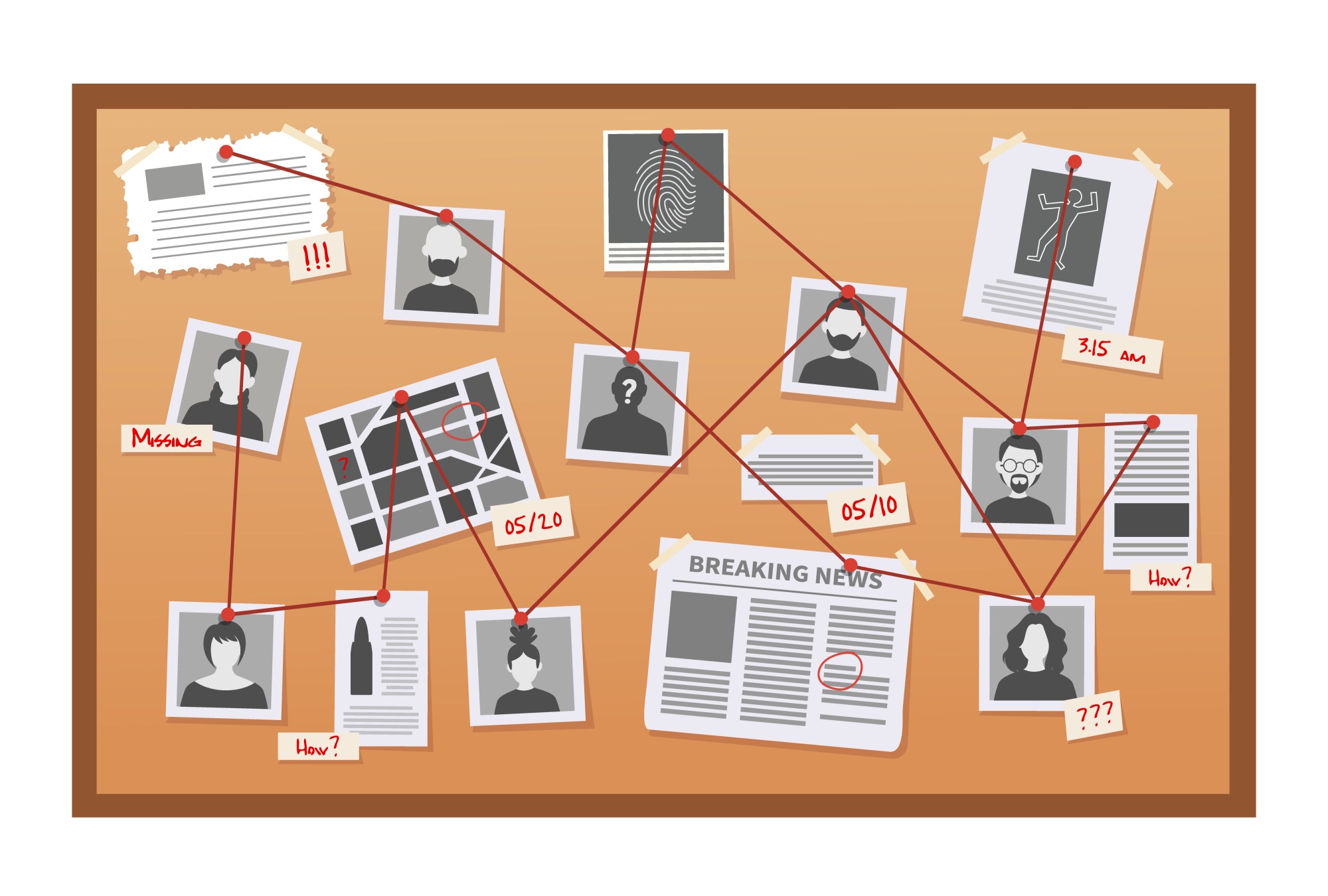As a Catholic, I suppose I should try harder not to enjoy Protestant factional infighting as much as I do. But every time I read something as bog-bottom dumb as Megan Basham’s excruciatingly imbecilic new book, Shepherds for Sale: How Evangelical Leaders Traded the Truth for a Leftist Agenda, I am reminded of the poetic justice arising from American-style choose-your-own-adventure theology and exegesis: There never was a better advertisement for the benefits of maintaining a Magisterium.
First, a note about book reviewing. (“Why do they come to me to die?”)
There is a story about William F. Buckley Jr. sending a copy of his book The Unmaking of a Mayor to Norman Mailer, who, being an egomaniac and famously so, immediately turned to the index to see if he had been mentioned there, and what he found in the “M” section was Buckley’s handwriting: “Hi, Norman.” I will admit to sometimes turning first to the index of a book I have been asked to review, and, yes, checking to see whether I am cited—or if any of my friends and colleagues are.
I’m not there. (No surprise.) Basham does, however, mention four of my favorite authors (or authorial personae, I suppose) in the index: Matthew, Mark, Luke, and John. What you really need to know, though, is that none of those gospelists gets as many mentions as does my friend David French, an evangelical champion whose criticism of Donald Trump really brings out the devil in people like Basham, for whom the name of Jesus (zero mentions of That Guy in the index, unless you count the book Jesus and John Wayne) is simply another branding vehicle, an instrument of the banal and grasping enterprise that is conservative-Christian activism in Anno Domini 2024.
If you are in the market for an argument that Trump’s approach to immigration is the genuinely Christian one, then this is the book for you. If, on the other hand, you are not a self-moronizing cretin, maybe try Pope John Paul II.
Reviewing a book like this is like trying to argue with an avalanche—an avalanche of stupidity and error, to be sure, but an avalanche all the same. I have the same problem with this book I had reviewing Alissa Quart’s similarly idiotic Bootstrapped: The author can make enough errors in a dozen words that the critic needs 400 words to correct them. And so one ends up writing an annotated companion to a work that was not worth reading in the first place, much less annotating. (If you would like a more conventional review of the book, please do check out Warren Cole Smith’s excellent contribution.) And while readers have often suspected otherwise, I do not generally get paid by the word.
Here is how the book is advertised: “Basham documents how progressive power brokers—from George Soros to the founder of eBay to former members of the Obama administration—set out to change the American church.” That is, of course, a rather different thing from the premise of the book’s title, and Basham does very little to document, or even to seriously argue, that there are a lot of American pastors who are “for sale,” and who have been corrupted by money from George Soros et al. In fact, she does very little even to document that Soros money, and what she does is the usual thing you see in second-rate right-wing outlets such as the Daily Wire (her online home) and Breitbart (the generally incompetent “journalism” of which she takes some pains to defend), which is to construct one of those cop-show murder walls with the red string connecting this and that: Soros gave money to this group, which gave a grant to that group, which did a project in partnership with this group, which has a board member who previously served with that other group, etc. There isn’t any question that Soros and his Open Society project hope to influence prominent institutions, including conservative-leaning churches and religious associations. Soros is engaged in a social change project, and that is what social change projects do. His ends are not generally ends that I share, but that doesn’t make it nefarious.

But Basham is one of those extraordinarily self-assured Protestants who believes that any major disagreement with her worldview must be a sign of sin, religious error, or personal intellectual corruption, who treat Scripture as self-evident and their own interpretive powers as inerrant. That is by no means limited to religious issues per se: Christians who take a more activist view of, say, environmental issues come in for it, too. What kind of conservative Christian goes in for environmental stuff? Off the top of my head, there’s the one whose name is at the end of Russell Kirk’s The Conservative Mind from Burke to Eliot. (How could the author of The Waste-Land fail to notice environmental degradation or to understand its religious significance?) But Basham seems to be limited in her religious reading to angry political partisans writing on social media.
Her politics are as illiterate as her religion. Staying on the subject of environmental issues, Basham sneers at some evangelical types for backing a cap-and-trade emissions policy, writing: “A decade before, it would have been difficult to imagine the [National Association of Evangelicals] pushing legislation as progressive as cap-and-trade carbon emission limits. After all, it has then been so influential among conservatives that Ronald Reagan delivered his famous ‘Evil, Empire’ speech to its 1983 national convention.” About that: Do you know who was a big cap-and-trade guy? Ronald Reagan. With the able assistance of George Shultz, Reagan fought for ratification of the Montreal Protocol, a cap-and-trade program aimed at ozone depletion and the “potentially significant climatic changes” associated with it. And did Reagan pick up that cap-and-trade notion from some stray progressive wandering around the White House? No, it was an idea popularized by Milton Friedman, who also argued for its implementation in greenhouse-gas emissions.
Can you imagine a modern Republican president working to negotiate—horrors!—an international agreement pledging the United States to some costly course of action on—angels and ministers of grace, defend us!—an environmental issue? Imagine a contemporary Republican saying, even approximately, of such an agreement: “It is a product of the recognition and international consensus that [this issue] is a global problem, both in terms of its causes and its effects. The protocol is the result of an extraordinary process of scientific study, negotiations among representatives of the business and environmental communities, and international diplomacy. It is a monumental achievement.”
You know what would happen if a Republican president (not named Donald Trump) said and did that? You’d have some idiot at the Daily Wire writing that he’d been corrupted by Soros money.
Reviewing a book like this is like trying to argue with an avalanche.
You see what I mean about the disproportion between the number of words needed to write something stupid and wrong and the number of words needed to correct it?
You get the same thing in every infuriatingly stupid chapter.
Basham takes as an example of the embrace of “trendy Marxism” an essay about race and racism (which has all the hallmarks of being unedited and self-published) by Prof. Matt Mullins, formerly of Southeastern Baptist Theological Seminary (SEBTS) and currently at Oklahoma Baptist University. Mullins’ product, titled “Is Critical Race Theory ‘UnChristian,’” is the usual blather from the diversity office, superficial and sloppy, the work of an academic who couldn’t even be bothered to put a question mark at the end of his titular question. There are more intellectually rigorous—and more radical—considerations of CRT to be found. Why the focus on a guy nobody’s ever heard of? The most likely explanation, I think, is because a disgruntled SEBTS student made a stink about the supposed prominence of CRT in SEBTS intellectual life a few years ago, and the controversy has endured on social media, wrapped up in an excruciatingly dopey evangelical cancel-culture campaign against Karen Swallow Prior. But, sure, let’s stick with Mullins. Why not?
Basham faults Mullins for writing that “on the structural level, racism has produced dramatic inequalities in our society that will not disappear even if everyone begins to love each other.” Which is to say, he implicitly advocates an activist approach to the economic advancement of African Americans, a position that would not have been unknown to such presumptive practitioners of “trendy Marxism” as Abraham Lincoln and Barry Goldwater. Basham then goes on to cite the economist Thomas Sowell—and one sometimes suspects that Sowell and Clarence Thomas are the only black intellectuals these people have ever heard of—and his work in Discrimination and Disparities. And here is what she argues:
Just one data point: the black poverty rate fell from 87 percent in 1940 to 47 percent in 1960, even while Jim Crow, redlining, and other racist policies still held sway. After the Johnson administration began to address inequities through its vast welfare expansion specifically targeted toward black communities, the growth [she means “decline”] was much slower. “There was a far more modest subsequent decline in the poverty rate among blacks after the massive ‘war on poverty’ programs began,” Sowell writes.
She recommends that Mullins and others instead pursue programs that would encourage marriage as an anti-poverty measure.
I have read Discrimination and Disparities—and I would bet good money that Basham has not, but never mind that for now—and, as one might expect, Sowell takes a rather more interesting and substantive approach than what you’d think if you had only Basham’s half-digested account to go by. Allow me to add a bit of my own context here.
It is true that black poverty decreased more rapidly from 1940 to 1960 than it did from, say, 1960 to 1980, though the decline has been (with the usual statistical variability) continual, having declined from 47 percent in 1960 to about 17 percent in 2022—proportionally a much larger decline, but, true enough, a slower one. That’s interesting! So, what happened in the 1940s, which remains the most extraordinary decade for black economic advancement in American history? Was there a sudden rush to the altar and an outbreak of marriage?
No, there was an aggressive campaign of federal activism, a world war, and an economic boom, with real GDP growth in the 1940s at an annualized rate of 5.6 percent—far outpacing any other recorded decade in American history before or since. (We don’t have great economic data for much of the era before the Great Depression.) Franklin Roosevelt’s contributions to civil rights were much more modest than they might have been, but his directive against discrimination in employment (Executive Order 8802) and the subsequent establishment of the Fair Employment Practice Committee are considered by some historians to be the most consequential civil rights action between Reconstruction and the legislation of 1964. The effect on black wages and employment was dramatic:
Between 1940 and 1950 the proportion of black male workers classified as operatives (semi-skilled workers) in the Census rose from 12.6 to 21.4 percent (whites went from 19.0 to 20.2 percent), and the proportion in manufacturing industries rose from 16.2 to 23.9 percent (whites went from 25.5 to 27.7). … Black men who worked in war-related industries during the 1940s and who were still working in such industries in 1950 earned a substantial premium (around 14 percent) over observationally similar black men who did not enter these industries. The movement of black men into manufacturing industries in the 1940s was central to their economic progress.
There is a lot of dumb stuff said and done in the name of diversity and racial justice, but the example of the 1940s and 1950s does not prove the point that Basham is trying to make—it is, to the contrary, some of the best evidence at the disposal of people who call for a more activist, federal, and economically oriented approach to issues of racial disparity in the United States.
That policy and programs can make a huge difference—and that these may be necessary if not sufficient in themselves—is something that one could learn from … Thomas Sowell’s Discrimination and Disparities, among other sources. Sowell observed, for example, that “whatever the potentialities of Jews during the era of the industrial revolution, and despite their literacy and other human capital, there was often little opportunity for them to gain access to the institutions of the wider society in Europe, where the industrial revolution began.” And then came the United States, with its Bill of Rights and prohibitions against religious discrimination, which resulted—over the course of more than a century—in a radical change in Jewish economic and cultural life. “In the wake of these developments,” Sowell wrote, “Jews began to flow, and then to flood, into universities. By the 1880s, for example, Jews were 30 percent of all the students at Vienna University. The net result in the late nineteenth century, and in the twentieth century, was a relatively sudden proliferation of internationally renowned Jewish figures in many fields, including fields in which Jews were virtually non-existent among the leaders in earlier centuries.”
The argument Sowell actually makes is not that the existence or removal of formal discriminatory programs is irrelevant or a low-order issue, but that the progress of social grounds depends on what he calls a “required ensemble” of prerequisites. The removal of formal discrimination against African Americans did not result in the same social pattern as the removal of formal discrimination against Jewish Americans because African Americans and Jewish Americans were and are in very different social situations. That isn’t precisely a structural racism argument, but it is closer to that than it is to, say, “Keep it in your pants until you get married and everything will turn out okay.”
Contempt for the ideas one is writing about is almost always a disability for a writer, but Basham has something worse: contempt to which she is not intellectually entitled. She is simply convinced of her own unassailable correctness and spends the book assembling haphazard and half-understood evidence for that proposition. And that’s how you end up accusing an evangelical writer of downplaying the sin of homosexuality in order to be more appealing to win approval after he publishes an essay headlined “Downplaying the sin of homosexuality won’t win the next generation.”
The writer there is J.D. Greear, a pastor whose supposed offenses figure prominently in the book. He is entirely capable of defending himself, which he has, and fairly capable when it comes to shining a light on the shoddiness of Basham’s supposed journalism. But consider this little bit. Because everything is culture war to these clowns, Basham writes:
“Mega-church pastors of Greear’s variety wear not suits and ties, but checked sport shirts, the sleeves rolled up at the wrist, with maybe a fleece Patagonia vest in the fall. Their sermon style tends to be similarly informal, rarely taxing attendees’ attention by delving into theological terms like soteriology or hypostatic. Yet, in recent years, a new form of spiritual jargon—words like hegemony and cultural representation—has peppered their preaching. Out of the pulpit, many have taken up the same social activism that saw New York’s City Hall remove its statue of Thomas Jefferson and school boards across the country rename junior highs so as to disassociate from the likes of Patrick Henry and Francis Scott Key.”
Greear responds by noting that he can’t remember using the word hegemony in a sermon, that he has never preached about the statue controversies or renaming schools, and that—and here the indictment gets serious!—he doesn’t own a single item from Patagonia. “But I’d like something,” he adds. “I’m an XL, and my birthday is May 1. My wife says I have a ‘true summer’ palette, if that’s helpful, so stay away from saturated colors.” In her defense, Basham has since complained that “authors should be allowed some incidental creative license to make the reading more enjoyable.”
But the characterization wasn’t incidental, wasn’t creative, and didn’t make the reading any more enjoyable, alas. It’s just bulls—t from a bulls—t artist, and a second-rate bulls—t artist at that.
This is a book about, and for, Christians, which means there is something on the table more important than journalistic incompetence. There is the matter of bearing false witness. Megan Basham has some apologies to make and a public record to correct. Judgment, I am reliably informed, comes like a thief in the night.







Please note that we at The Dispatch hold ourselves, our work, and our commenters to a higher standard than other places on the internet. We welcome comments that foster genuine debate or discussion—including comments critical of us or our work—but responses that include ad hominem attacks on fellow Dispatch members or are intended to stoke fear and anger may be moderated.
With your membership, you only have the ability to comment on The Morning Dispatch articles. Consider upgrading to join the conversation everywhere.